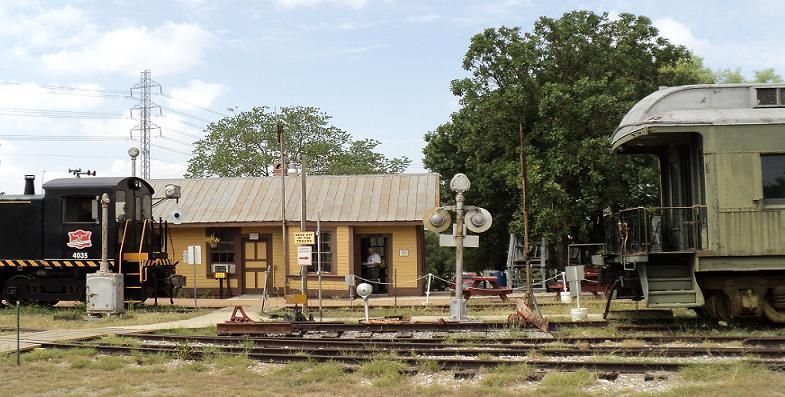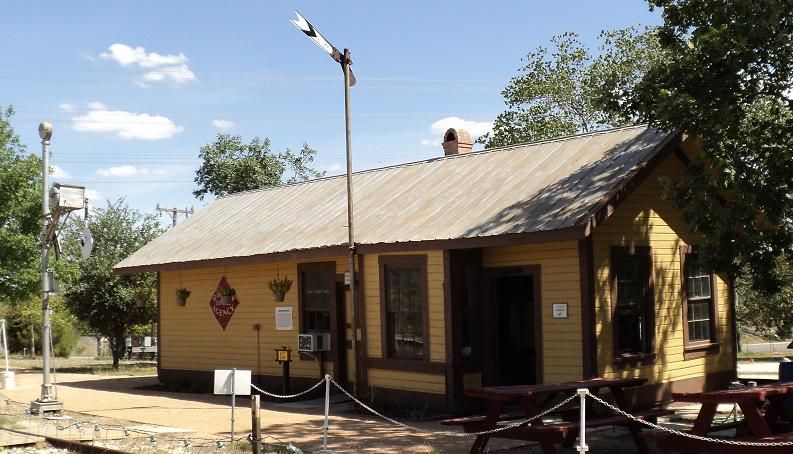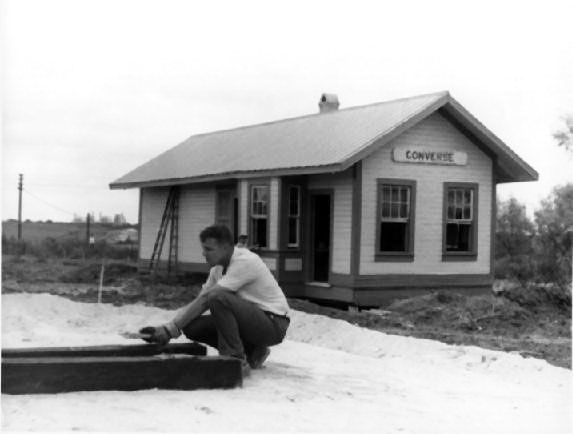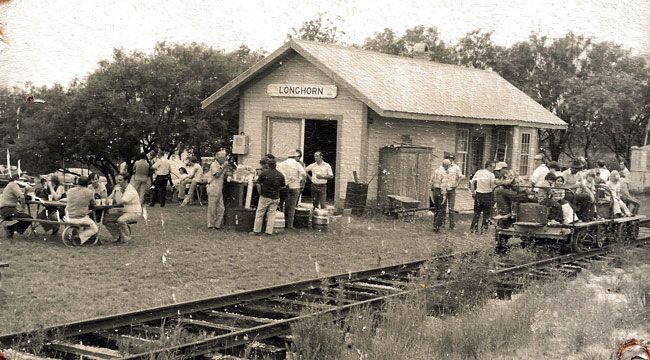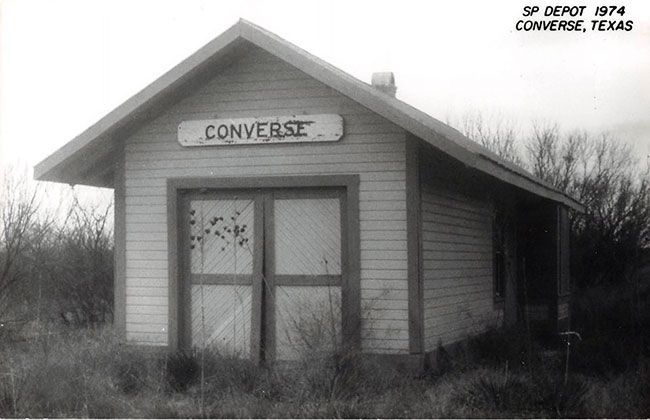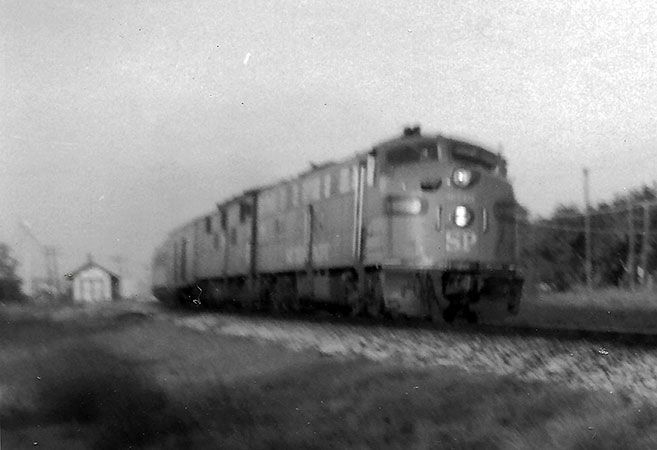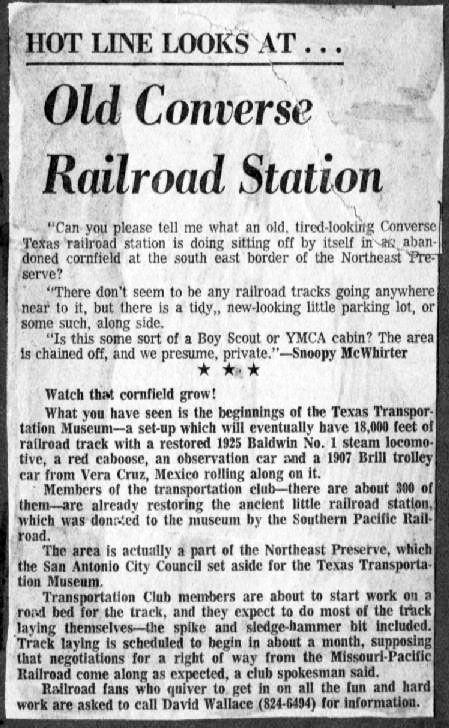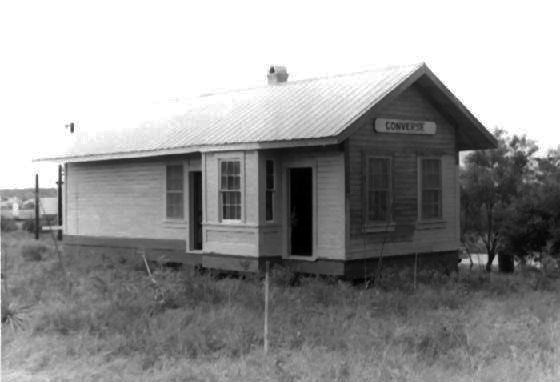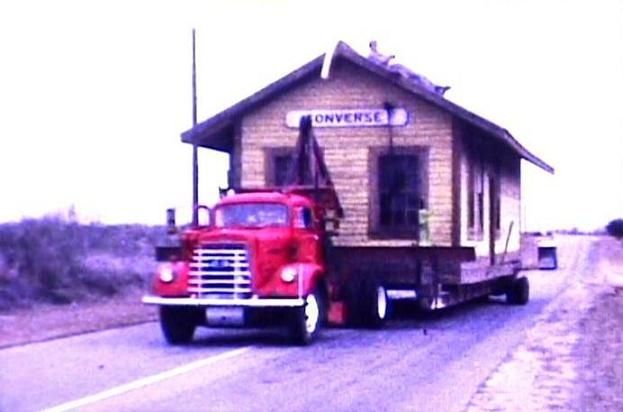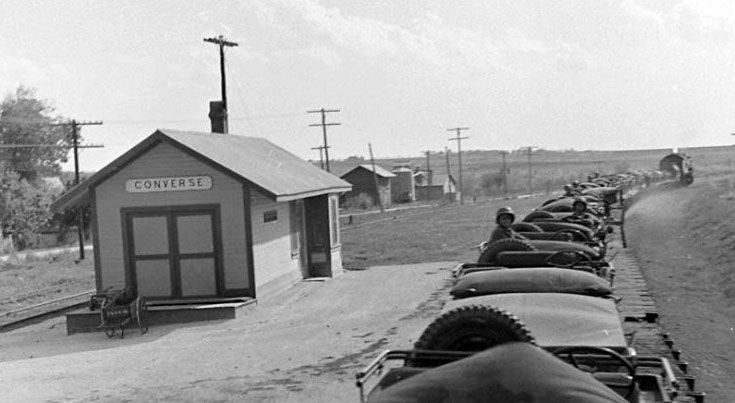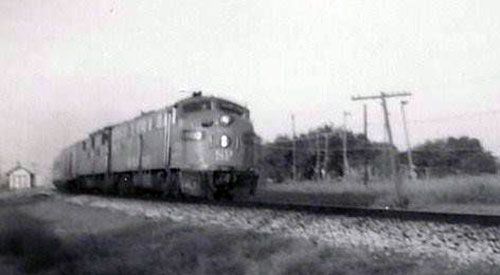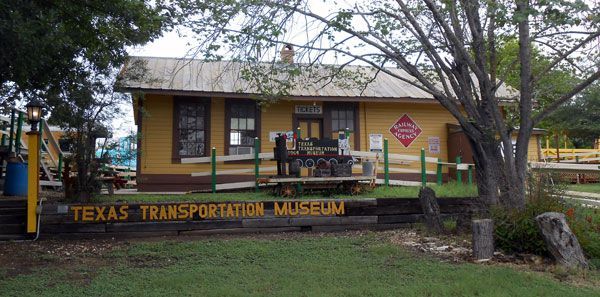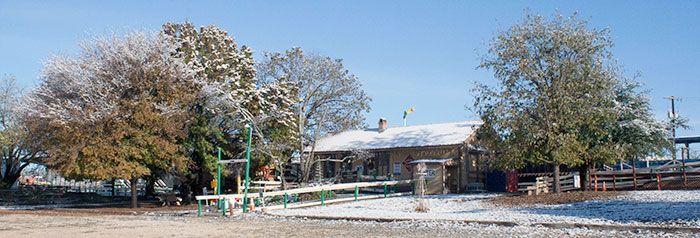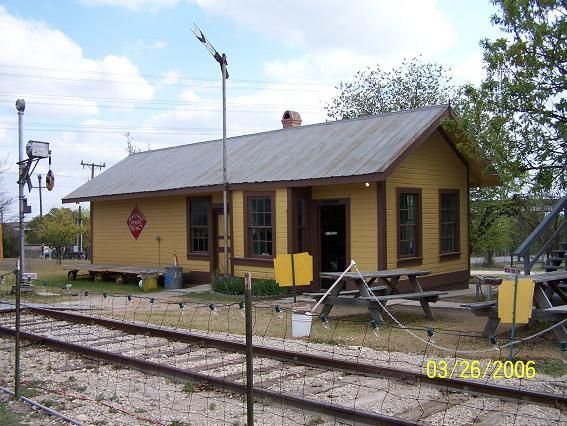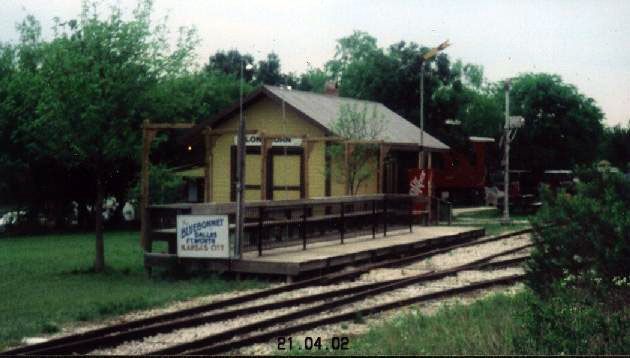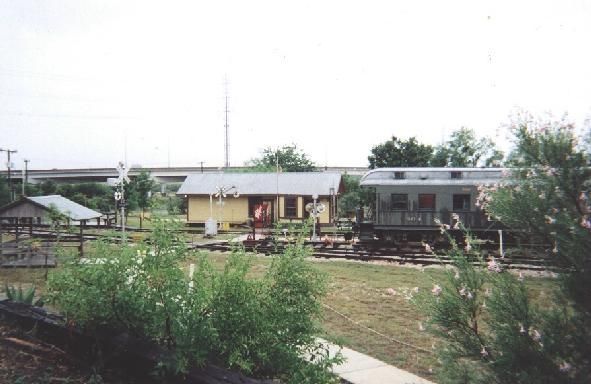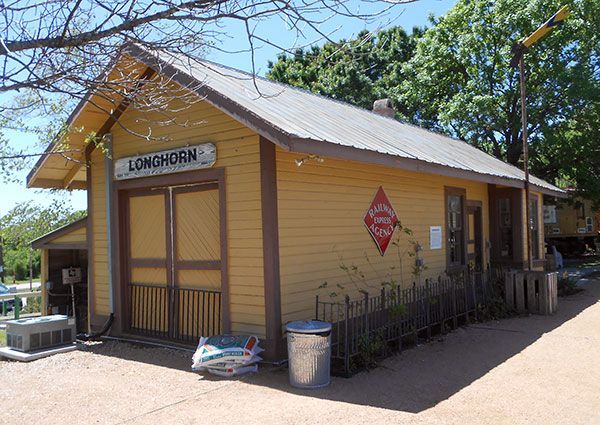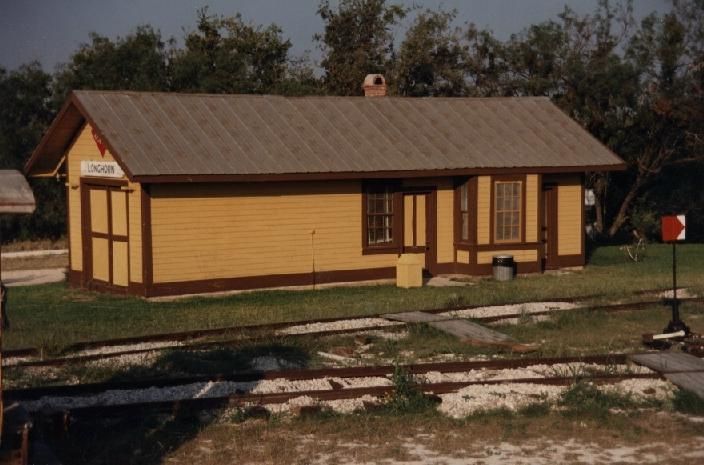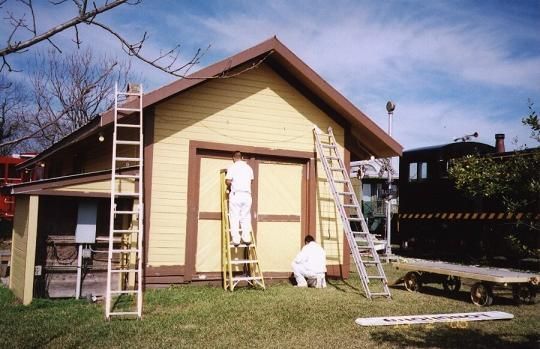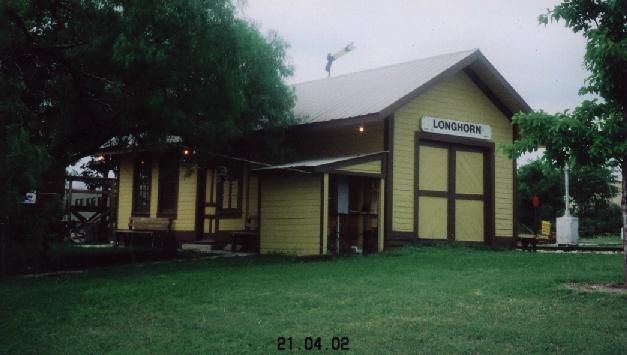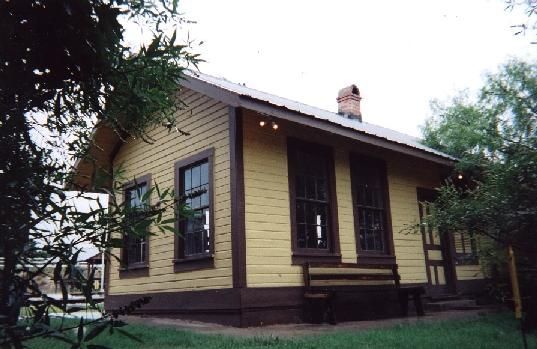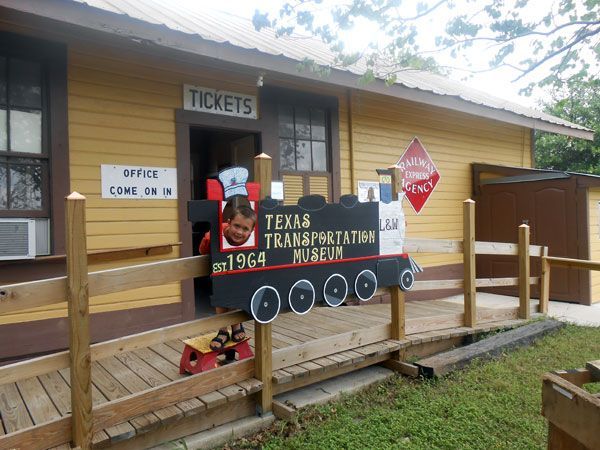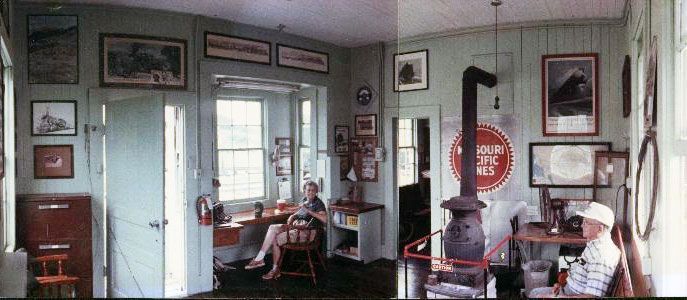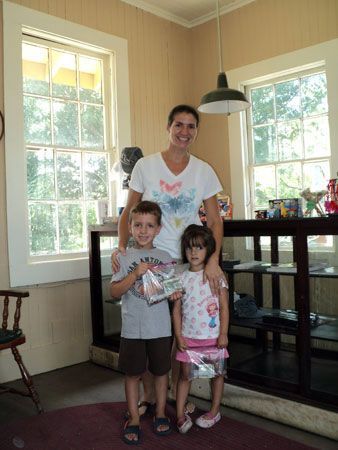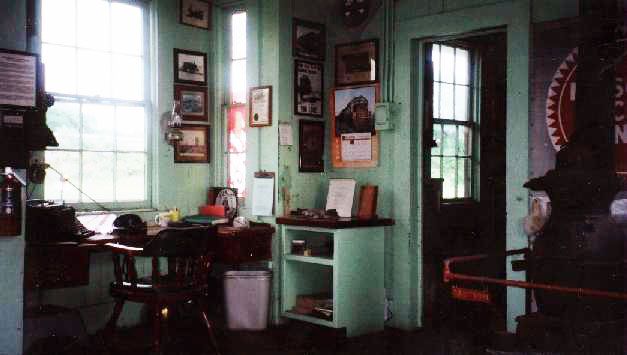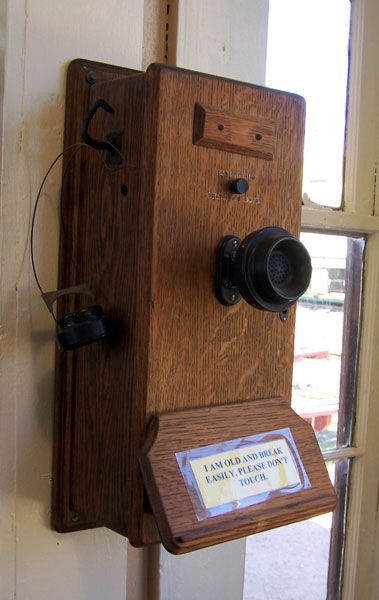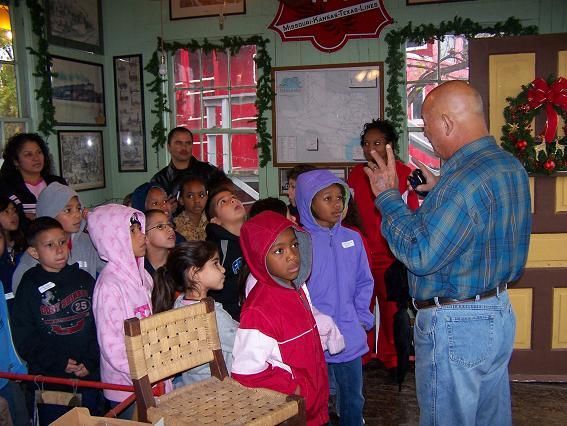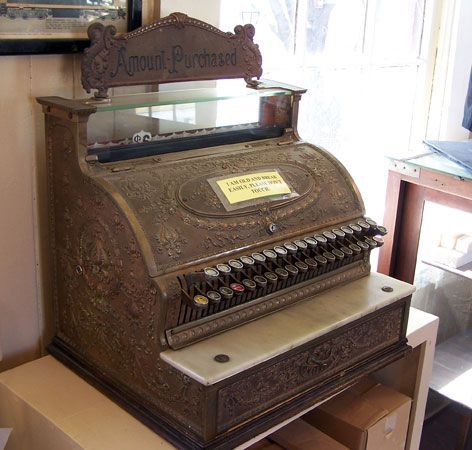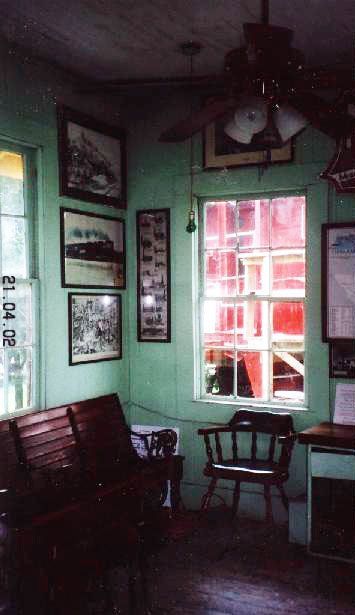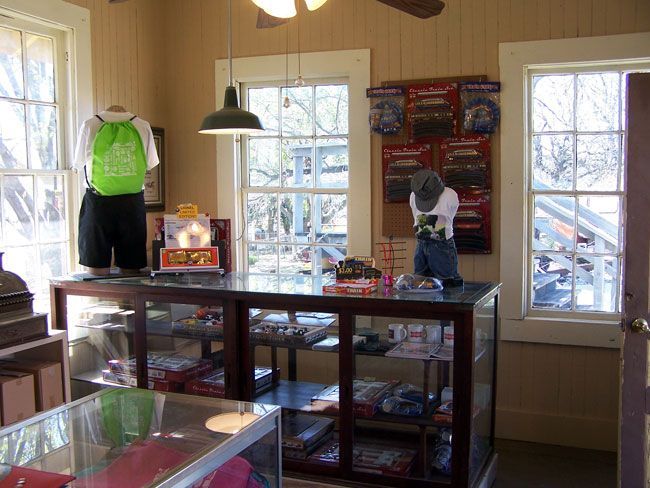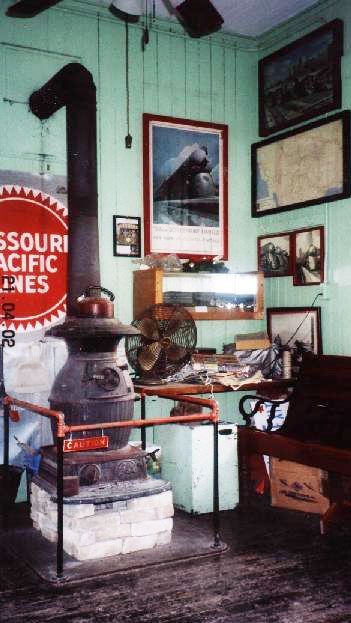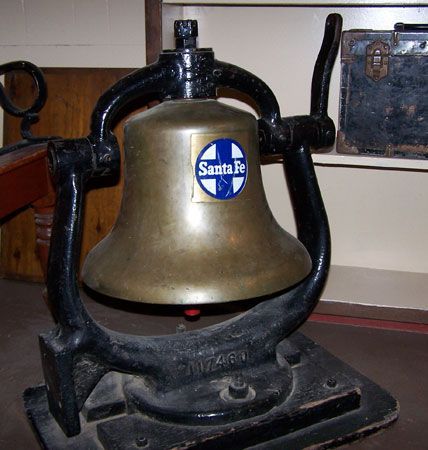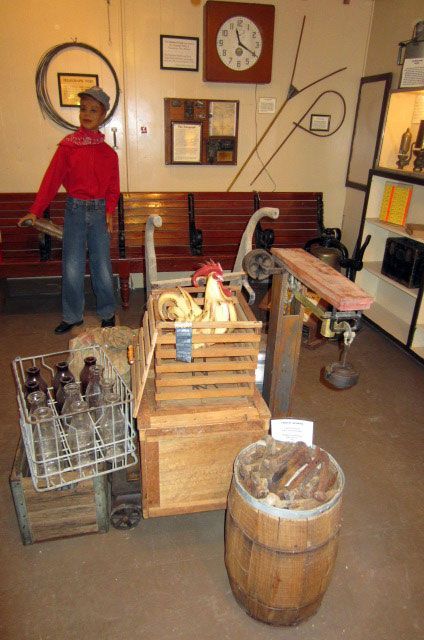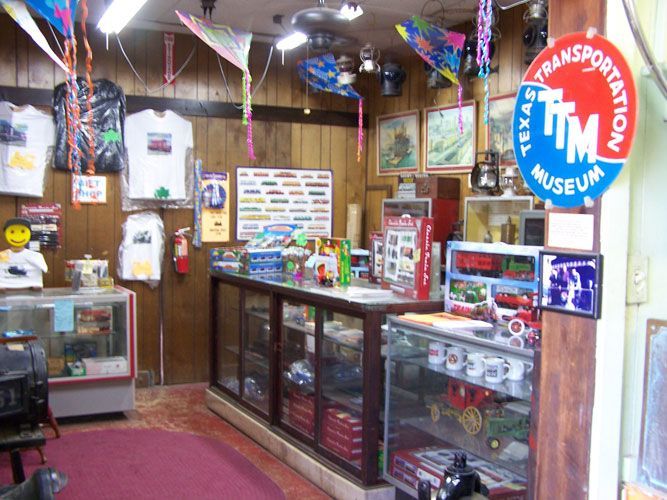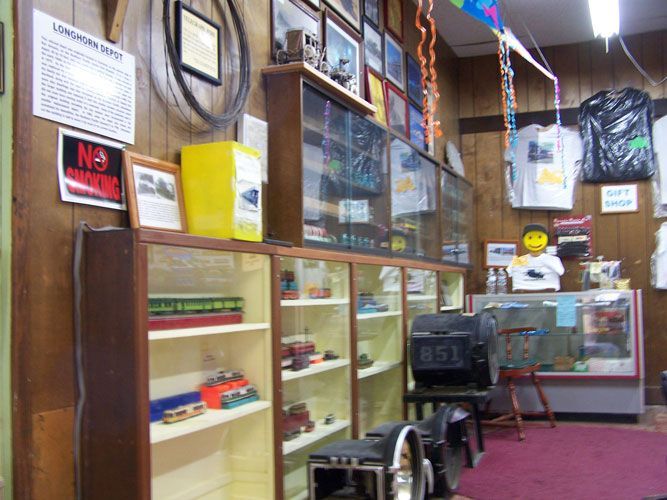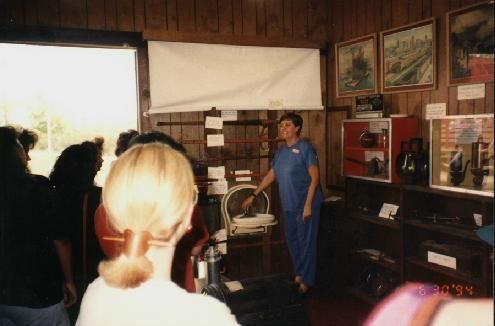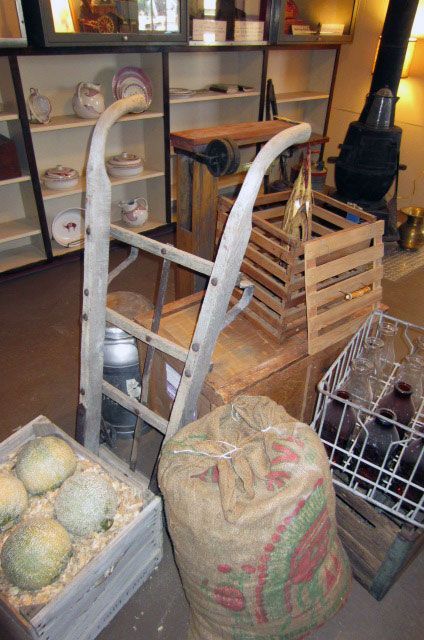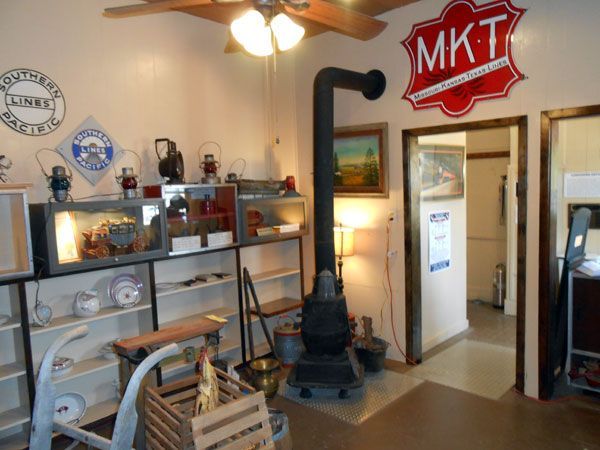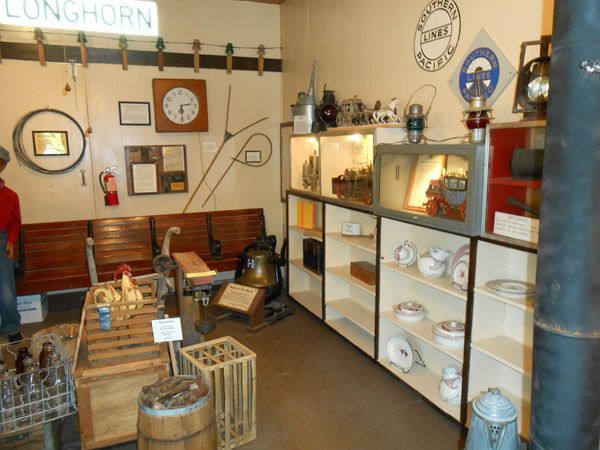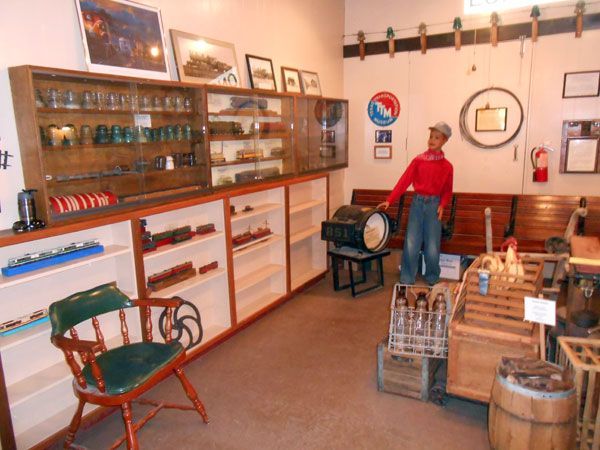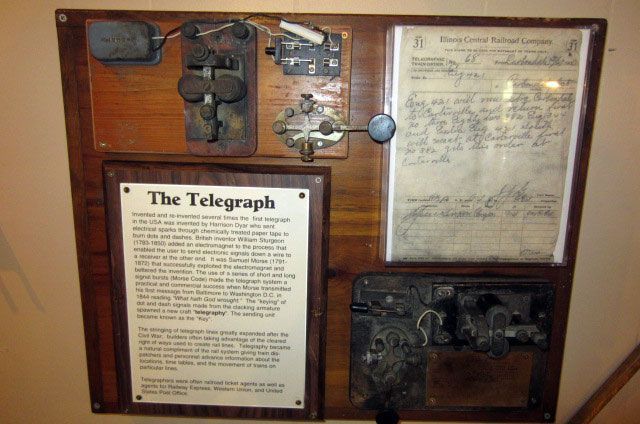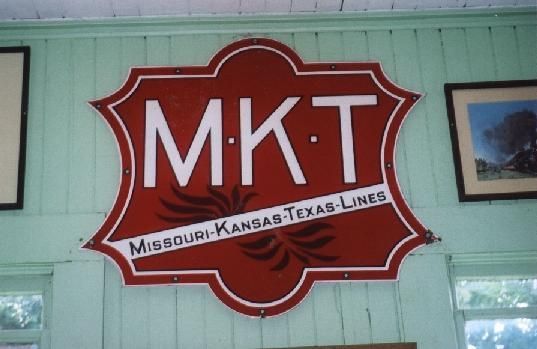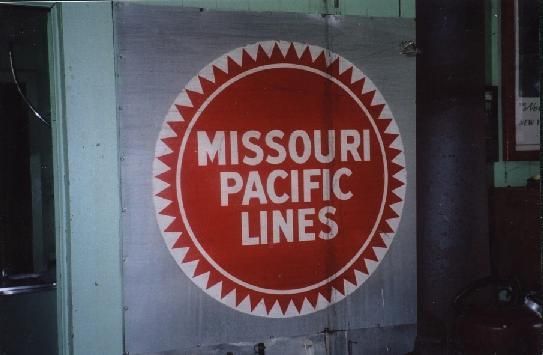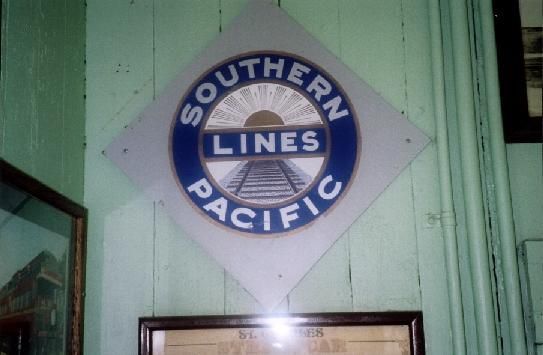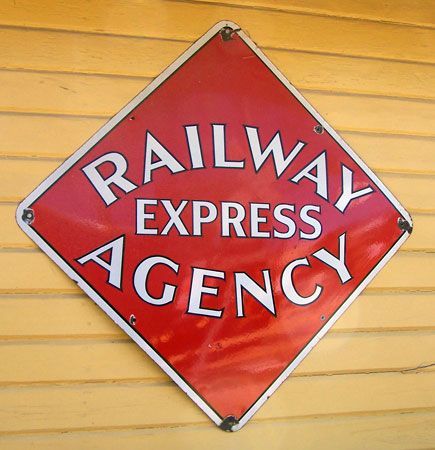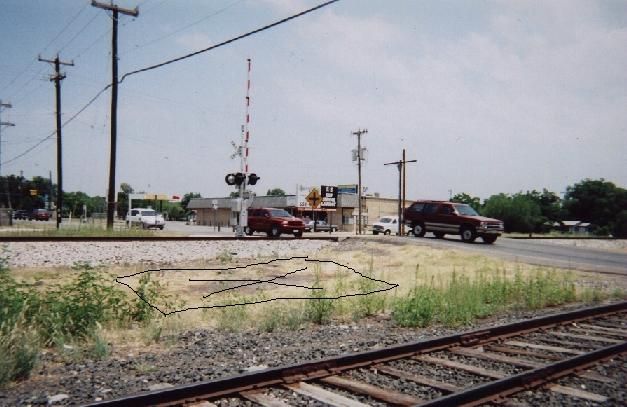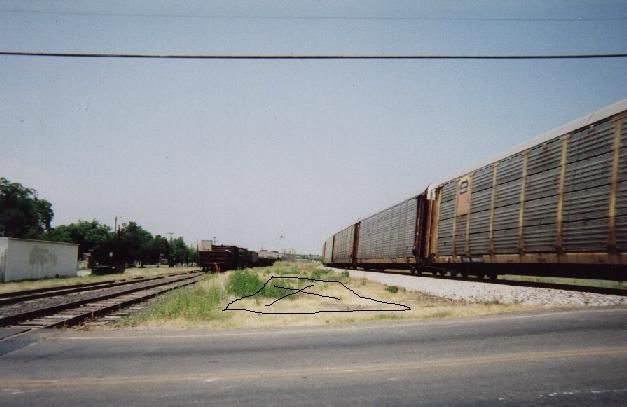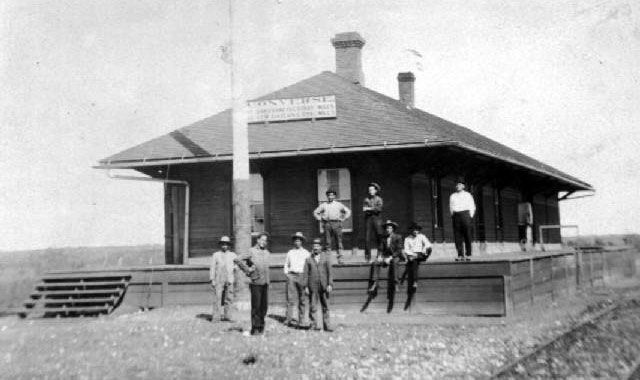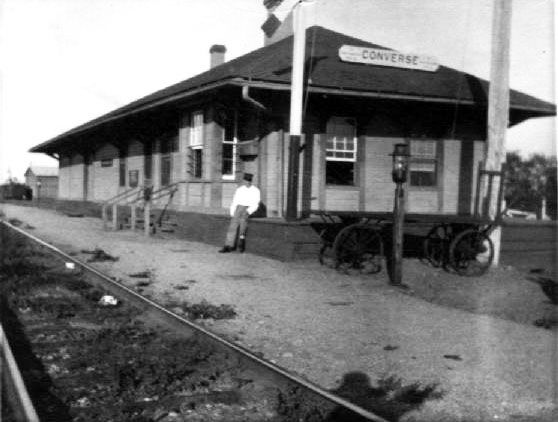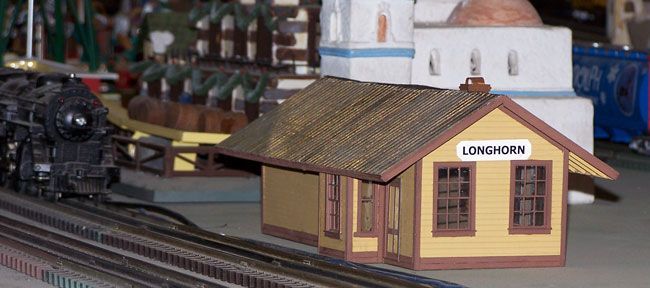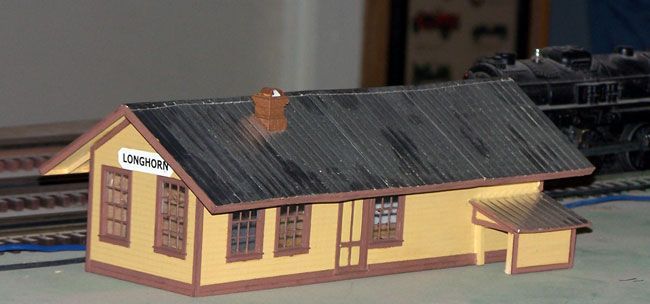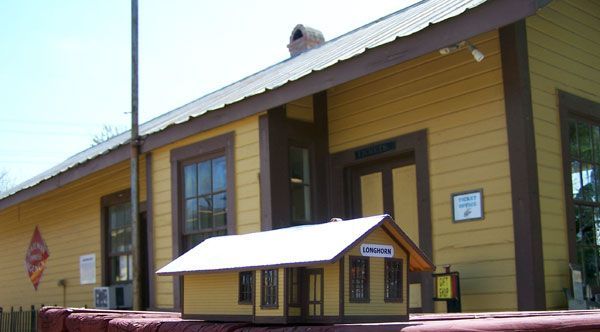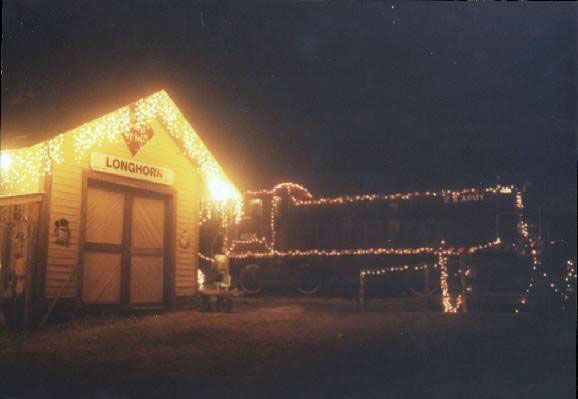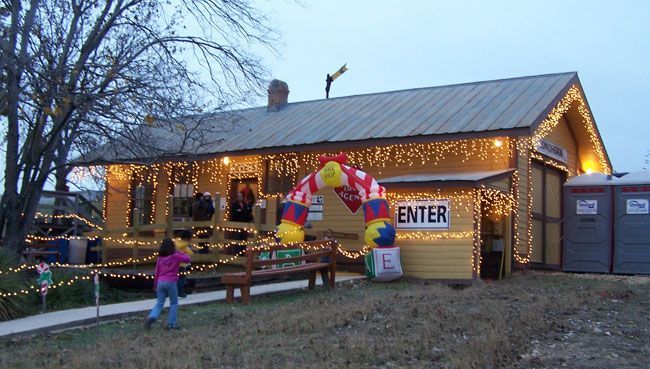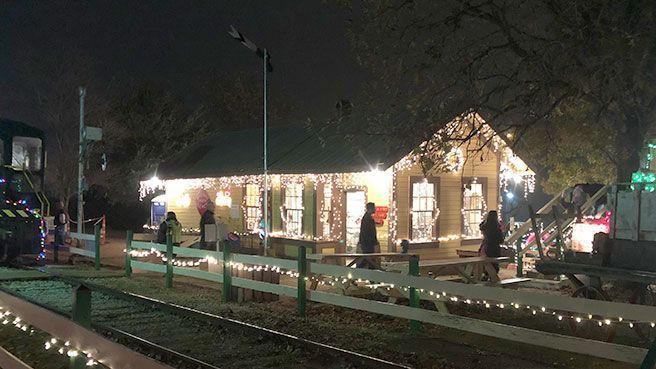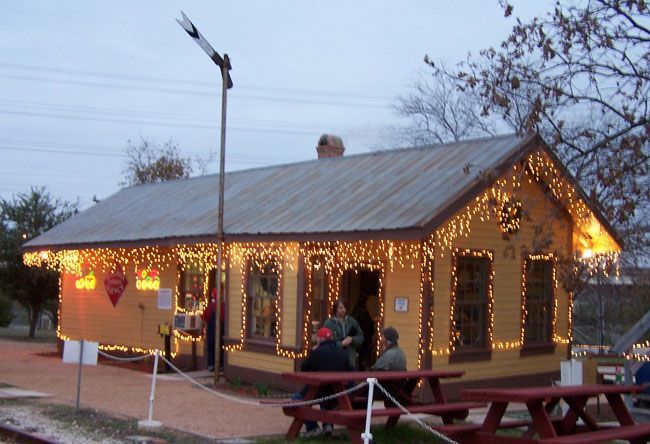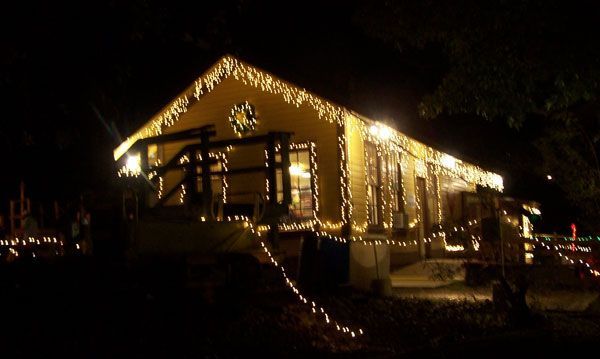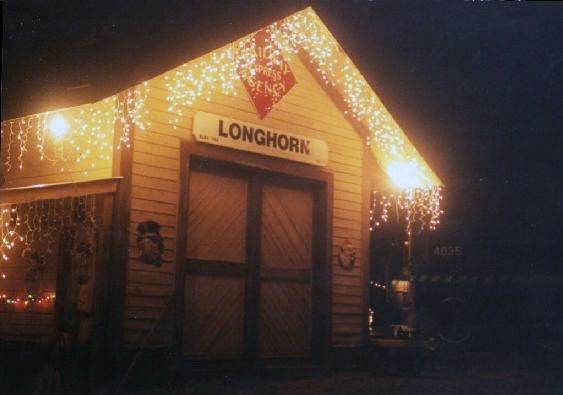The Longhorn and Western Depot
Former Southern Pacific Depot in Converse, Texas
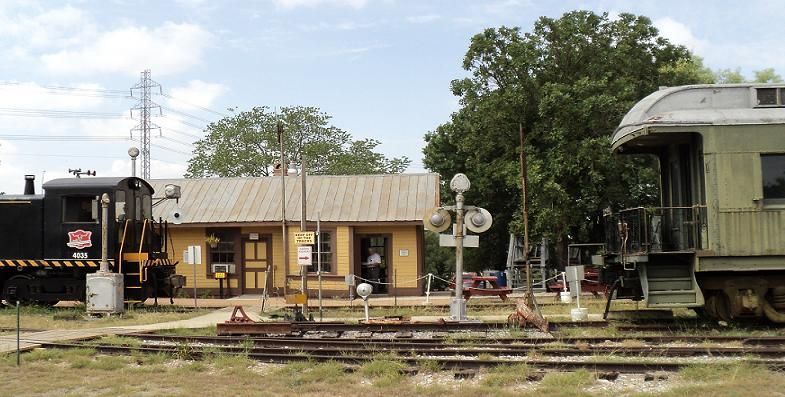
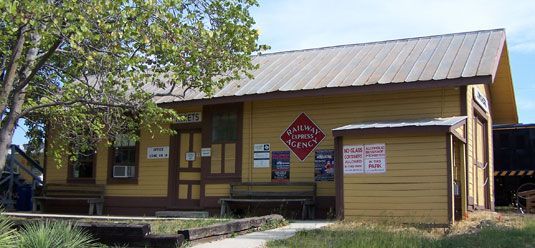
The Longhorn & Western Railroad depot was built in the early 1940s in Converse, Texas, on the eastern edge of San Antonio. It was donated to the museum in 1968 by the Southern Pacific Railroad on whose system it had operated. It was brought to the Texas Transportation Museum in San Antonio in the late 1960s. It is a small wooden rural depot that replaced a larger masonry structure built around 1890. The "new" much smaller structure reflects the diminishing role of passenger travel, especially in small towns where express trains did not stop. These trains were called "limited" because they only made a limited amount if stops. Local trains still stopped at every station along the route but were becoming much less frequent as competition from buses and private automobiles grew.
The depot is the first thing you will see when you drive in through our gates. It is also where you buy your admission tickets which include unlimited train rides on our full sized Longhorn & Western Railroad. It is entirely appropriate that this wonderful old depot, saved from destruction in the late 1960s, is the nerve center of the museum. This was the role of small rural depots like this one all around the nation. The station master was a one person community center and chamber of commerce. He kept the trains rolling, greeted passengers, helped them with their luggage and light freight. But he also encouraged local business people and farmers to expand their operations and invited would be entrepreneurs to his district and helped them get situated. The depot also had the most accurate clock in town. Folks would phone the depot from all around the Community on Sunday around noon, to reset the clocks in their houses at "railroad" time. Scroll down the page for more pictures and the story of this particular depot.
Our historic depot is the focal point of the Longhorn and Western Railroad, indeed the whole museum. It was saved from demolition in the late 1960s. It had been "retired" a few years earlier. The railroad closed most if not all of its remaining small depots along their lines around this time. Most are lost, unceremoniously demolished. All that remains of the depot in Seguin, for example, is the old patterned tile floor, which is bleaching to nothing in the sun. Fortunately, this wonderful building has survived and sees more railroad passengers in a week than it did in a year since World War Two.
The depot was not in particularly good shape when it came to the museum. Founding museum member, Dave Wallace, Charter Member #1 and first chairman of the museum, saw the neglected old structure while driving through Converse in 1968. He made some enquiries and found out it was soon to be demolished. Dave, was, and still is, an enterprising kind of fellow, so he made his way to the office of the Southern Pacific District Superintendent. He asked if the SP might donate the building to the museum and was given a swift affirmative. He was told if the museum could get to it before the soon to arrive SP wrecking crew to go ahead and take it. If the crew got there first, however, they would not hang around to see if we might be able to make something happen. Wasting no time, Dave had a friend who owed him a favor go out to Converse and, before the good folks of Converse knew what had happened, the whole building was lifted up and carried away to its new home. With the passage of time, it has now spent far more time at the museum than it did in Converse !
The depot has been a source of pride for the museum and the subject of much attention. It is essentially the same building that was moved to the museum in 1968, and we maintain its original interior and exterior SP color scheme. It has been painted and repainted quite a few times, most recently in 2005. Thanks to the generosity of South Texas Interiors, a local general contractor, both its interior and exterior were extensively refurbished. An air conditioning/heating system has been installed. Even so, especially in the more temperate months, you can still get the experience of waiting for a train as they did in the old days, with windows wide open, antique fan whirring, grateful for every passing breeze.
Longhorn Depot ticket office / waiting room
Through the astonishing generosity of many, many people, the building, indeed the museum, is full of interesting railroad and transportation related items. On the exterior there are some nice Railroad Express Agency signs. The 'R.E.A.' was the forerunner of today's UPS and Fed Ex systems, and its fleets of vans were common sights at one time, delivering goods and packages across the country. We have an REA van, which is sadly close to the point of destruction. Although this depot served the Southern Pacific, we have taken the liberty of including memorabilia from the other two railroads that served San Antonio, named the Missouri Pacific and the Missouri Kansas Texas railroads.
Longhorn Depot freight room
Our depot is very typical of small town depots which used to dot the mainlines all over Texas. It has two main rooms. One, with windows and the stove, was for passengers. The other was the freight room. Our depot and our railroad took their names from the adjacent Longhorn junction on the Union pacific mainline opposite our front gates, which serves a nearby rock quarry.
This depot was not the first to serve Converse, a town, named for the Chief Civil Engineer of the Galveston, Harrisburg & San Antonio Railroad, Major James Converse. (The line did not reach down town San Antonio until the next year.) There were two prior structures. The first was almost a temporary building. The second was much more substantial than this one which was built to replace it. The first actual depot was built around 1878. It was much larger and had living quarters not only for the agent but also migrant laborers. The railroad brought in these workers but local farmers were unwilling to have the stay on their cotton plantations overnight so the railroad got into the business of not only transporting the workers but providing accommodation for them as well. It was demolished and replaced with a smaller structure to reduce the railroad's tax burden. The new structure was built, using some of the material from the original building. The bay window seems to originate from the former depot, as do many of the windows. Former carpentry marks and joints can be seen on some of the timbers. Of course not only is there is no dormitory, to further reduce city taxes, there was not even a sink or toilet.
Former location of the Longhorn depot in Converse, Texas
Above you can see some snaps of the depots old location. Unfortunately we have yet to unearth any pictures of "our" depot in its original location, but the search continues. Their are three lines at the site, all now run by the Union Pacific railroad which bought the struggling Southern Pacific system in the mid 90's. The depot, and the larger one it replaced, sat right between the lines. One may speculate as to which end was nearest the road but it would likely be the loading doors, and the building was probably set as far as possible from the road to allow for goods to be unloaded and picked up.
Second GH & SA railroad depot in Converse, Texas
Above are two pictures of the second, much larger, depot in Converse. It was built around 1900 to replace a smaller structure built in 1878. It had housing quarters for the migrant labor used to harvest one of the area's main crops back then, cotton. The railroad brought the labor in, housed them and shipped the cotton out. Adjacent to the depot was a huge cotton mill at one time. The building was raised with a ramp at one end to facilitate the loading of cattle on to trains. The station master from 1919 until the 1940's was a German immigrant, Philip Antes, who can be seen in the second picture. He liked Converse because so much of his native German was spoken there, but he was able to become fluent in both spoken and written English and Spanish, with the help of his wife, Lillie Bolton. Mr. Antes was a fine agent for the 'friendly railroad,' encouraging several businesses to locate in the area. Regrettably, he suffered a bad fall while inspecting a box car which led, eventually, to the amputation of the affected leg. It took time and perseverance but, fitted with an artificial leg, he did return to work some eight months after his accident. This structure was torn down and replaced in 1940. The building was old, and mostly unused by the time it was replaced, and new bulk shipping methods rendered local operations obsolete. To avoid paying higher taxes, the railroad made a point of not including a restroom or even ruining water in the replacement depot but may have used some of the old building's material, such as the bay window.
"O" Scale model of the Longhorn Depot
In 2012 TTM commissioned master modeler James Hipp of Pearsall, Texas, to make an accurate "O" scale scale model of our Longhorn depot. We are delighted with the results.
Longhorn Depot during "Santa's Railroad Wonderland"
The Longhorn and Western railroad depot really comes to life during our Christmas Extravaganza, "Santa's Railroad Wonderland." As you can see in the images, it lights up rather well. It is the main point of entrance for the event, as indeed it is throughout the year and our small gift shop will have something special for the train lover in your family.


